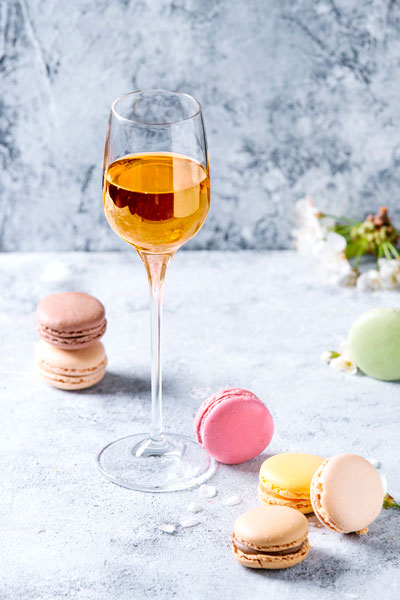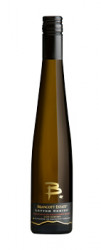We demystify one of the wine world’s most delectable drops: dessert wines, more lovingly known Down Under as “stickies”
Dessert wines are sweet, concentrated wines often enjoyed at the end of a meal, although not always (more of that later). As mentioned, these wines are often referred to in New Zealand and Australia as “stickies”, where they’re loved for their sweet, rounded flavours and silky mouthfeel. The name hails from their irresistible syrupy nature – although we reckon it could also be because they’re worth sticking around for after dinner too.
Know how
Stickies can be made in a variety of ways, often through processes that happen on the vine such as the late harvesting, drying or freezing of grapes – all methods that aim to concentrate the sweetness of the fruit – or via the presence of the fungus Botrytis cinerea, also known as Noble Rot (more on this below). Alternatively, these wines can also be made by processes that take place during winemaking, with the addition of a sweetening component such as unfermented grape juice or by stopping fermentation before all sugars are fermented to alcohol. Contrary to what you might taste, dessert wines are often produced with high levels of acid
to balance their residual sugar content.
Sticky types
Not all stickies are created equal – each will have their own unique and delicious flavour profiles. White stickies are usually packed full of fruit flavour, while the less common red stickies are richer and bolder. Sparkling stickies often feel lighter and more acidic due to their fizz, even if they are just as sweet as still versions. The Hungarian tokaji (pronounced “tow-kay”) has a spicy, aromatic profile, while Noble Rot stickies have notes of beeswax, vanilla and dried fruits.
Introducing the rotten noble
Some dessert wines have the word “noble” in their title, for example The Ned Noble Sauvignon Blanc. This is due to the presence of the fungus Botrytis cinerea, also known as Noble Rot, in the grapes. It’s hard to believe that a fungus that causes the rotting of grapes could ever be desirable but Noble Rot is highly sought-after for a lot of sweet wines. The presence of this fungus intensifies the sugar content of the grapes and creates delicious flavours of honey, beeswax and ginger.

Pair it up
Here are a few great ideas for matching dessert wines with after-dinner delights…
White and milk chocolate: sparkling dessert wine
Dark chocolate: red dessert wine
Fruit, spice and nuts: white dessert wine or sparkling dessert wine
Custard and vanilla: sparkling dessert wine
Soft cheeses: sparkling dessert wine
Hard cheeses: red dessert wine, Noble Rot dessert wine




